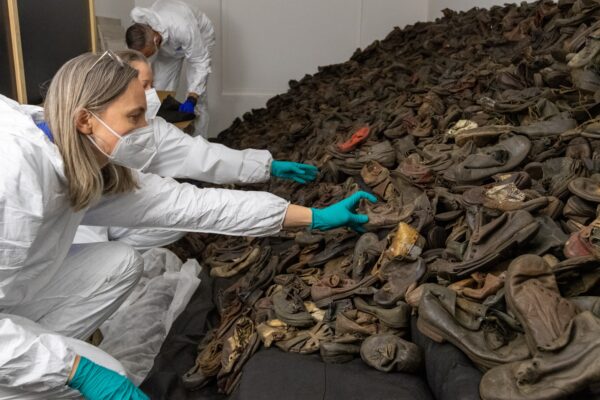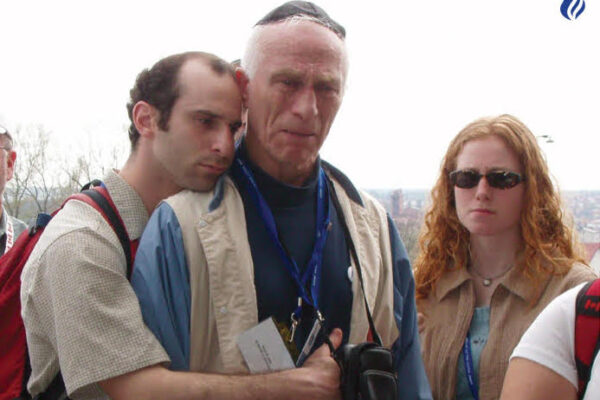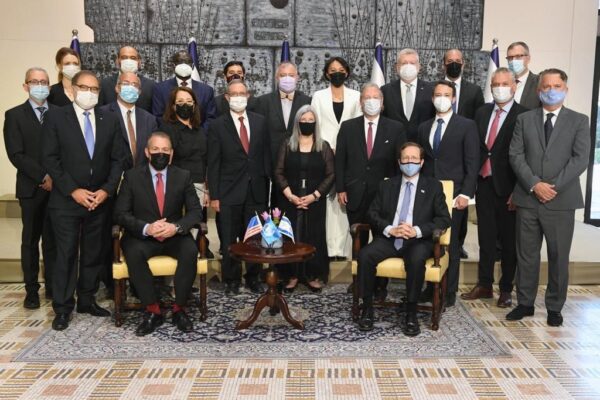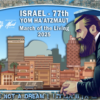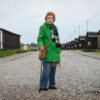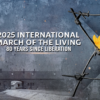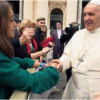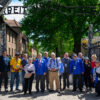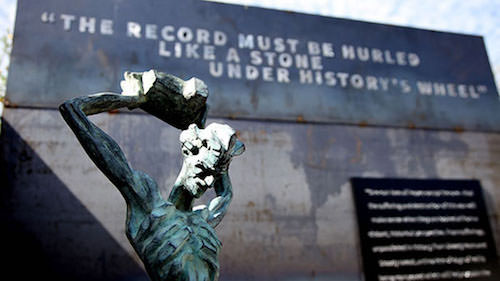
“When you walk in, you walk in something that is very much like a cattle car door,” said Samuel Cohon, Senior Rabbi at Temple Emanu-El, as he described the experience of visiting the newly expanded Holocaust History Center.
To enter the exhibit, visitors must walk through a barn-sized wooden door framed by stripped steel rods. Once inside, dark drapes, dim lights, and unvarnished wooden walls are meant to evoke the claustrophobic experience of concentration camps.
This interior exhibit is balanced by the open, welcoming rear patio and the old-fashioned neighborhood feeling of the sculpture garden front yard, both of which play crucial roles in the overall atmosphere of the campus.
The first synagogue in Arizona was established in Tucson in 1910, near the corner of 16th Street and Stone Avenue. A small building, it was the first home of the Temple Emanu-El, and now houses the Jewish History Museum.
After years of planning and development, the newly designed Holocaust History Center opened next door to the Museum in February 2016.
On a sunny day in April, religious leaders and education officials were among those touring the Center. Led by Bryan Davis, the Director of the Center, the group visited the immersive exhibit that retraces the history of The Holocaust.

Focusing on the voices of survivors who settled in Southern Arizona in the post-war era, the exhibit uses personal narratives to tell the story of the devastation of the Holocaust and the resilience of the Jewish people.

The Holocaust History Center is the realization of a concept began decades ago by Jewish leaders in Tucson. Designed as an educational space first, and a museum second, the Center is a place for students and community members to reflect upon and honor the memories of Holocaust survivors.

Nina Trasoff was among the small group of visitors. The testimonies of survivors who moved to Tucson after the Holocaust brings “a remembrance of things past that we cannot be allowed to forget,” she said. “By their simple presence and dignity, it prompts us to be more aware of what happened and what could happen.”
“There are dozens of Holocaust History Centers around the country,” Davis said. “Some people ask, why do we need one in Southern Arizona?” But Arizona students, he said, cannot be expected to visit the Holocaust Museums in Washington, DC or the Wiesenthal Center in Los Angeles on their own.

As an educational focal point, the Center provides a space for children in the state to learn about the history of the Holocaust.
“We are part of that greater landscape of Holocaust education organizations and this is a particular gift for our community to have.” Davis said.
Bishop Gerald Kicanas described the Center as a sacred space. He hopes that by visiting the exhibit, catholic school children will be able to learn about “the sadness and the tragedy” of the Holocaust.
“When I visited Auschwitz I remember a letter there from a teacher saying that every teacher should bring their children here so that this will never ever happen again.”
The exhibit draws heavily on the experiences of Holocaust victims and the testimonies of survivors to warn visitors of the social prejudices that lead to the systematic killing of people.
“Genocide is not just localized to that one experience,” Senior Rabbi Cohon said. “The Holocaust was unique. It was the destruction of half the Jews in the world.”
He said genocides are happening around the world and “we haven’t really yet learned that lesson.”
“Maybe this center can help,” Cohon said.
Web page and slide show by Julie Luchetta.













